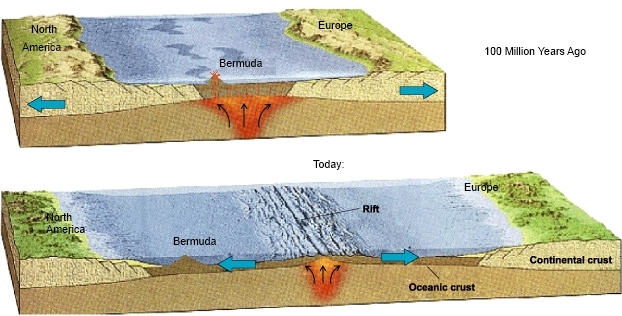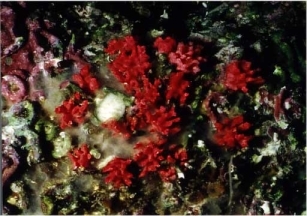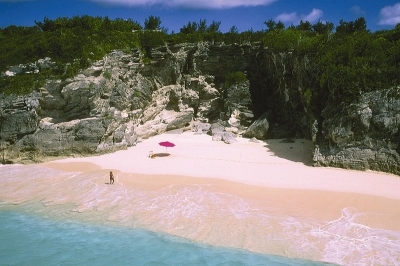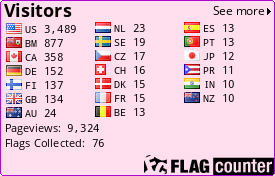Bermuda Pink Sands EarthCache
-
Difficulty:
-

-
Terrain:
-

Size:  (not chosen)
(not chosen)
Please note Use of geocaching.com services is subject to the terms and conditions
in our disclaimer.
The Characteristic Pink sand beaches of Bermuda tell an interesting story - and reveal an unlikely culprit!
100 Million years ago, a massive volcano created Bermuda in the middle (and a little to the left) of the newly formed Atlantic ocean. As Europe and North America were pushed away from each other by sea-flood spreading, Bermuda went along with North America, Cooling and enjoying the currents of the Atlantic Ocean. The Volcanos haven’t erupted in about 30 million years, but their Craters can still be seen in the geology of Hamilton Harbour and Castle Harbour.

Coral reefs formed around the island in spots where the water depth was just right. Corals and Algae produced shells high in Calcium carbonate. These skeletons built up over millions of years, and compressed over the volcanic skeleton of the island to produce a limestone shell. Fish that feed off the algae, corals, clams and other shelled creatures break the limestone and coral down into particulate sand. One example of this process is that of parrot fishes which bite off pieces of coral, digest the living tissue, and excrete the inorganic component as silt and sand.
The Pink Sand Beaches begin with tiny single-celled animals, Foraminifera, in particular, homotrema rubrum - or forams - dark red skeletal animals that grow profusely on the underside of Bermuda's coral reefs. When the red forams die, the skeletons plummet to the ocean floor. Wave action and scavengers erode the shells of the forams into red and pink sand. They become mixed with other debris on the seabed such as the white shells of clams, snails and sea urchins.

homotrema rubrum
It is at that time that Bermuda's white sand takes on its characteristic pink hue. Bermuda is one of the northernmost areas in the Western Hemisphere (but not the northernmost place in the world) for coral reefs. In Bermuda, see the contrast of pink sand, turquoise water between the shoreline, outlying reefs, and dark blue of the ocean beyond the reefs or land.
Over time, as sea level fluctuated, this sand was pushed up onto the volcanic rock and sand dunes were formed. Through the processes of dissolution and cementation, this sand became rock (limestone). Dissolution and cementation involve acidic rain (all rain is naturally, slightly acidic because of dissolved carbon dioxide from the air) falling on the sand and dissolving it, often forming some of the majestic caves of Bermuda. When the water evaporates, limestone is formed.

TO LOG THIS EARTHCACHE:
Sand is commonly divided into five sub-categories based on size: very fine sand (1/16 - 1/8 mm), fine sand (1/8 mm - 1/4 mm), medium sand (1/4 mm - 1/2 mm), coarse sand (1/2 mm - 1 mm), and very coarse sand (1 mm - 2 mm). These sizes are based on the F sediment size scale, where size in F = -log base 2 of size in mm. On this scale sand is from F = -1 to 4, with the divisions between sub-categories at whole numbers.
Send the answers to this earthcache to me through my profile.
1. Based on the size scale of sand, Estimate what sub-category does the sand of this beach fall into?
2. Estimate the weight of one cup of “DRY” sand from this beach.
3. OPTIONAL - Write your geocaching name in the sand and submit a picture with the log.

This cache is owned by a Bermuda Island Geocaching member....... for more information on our Geocaching group Click here: Bermuda Island Geocachers
Additional Hints
(No hints available.)